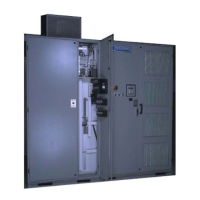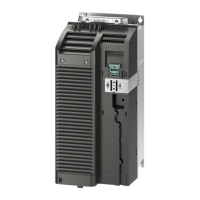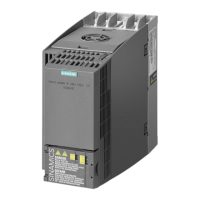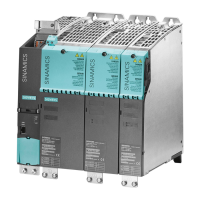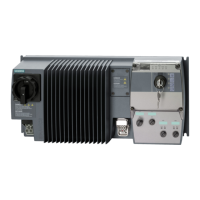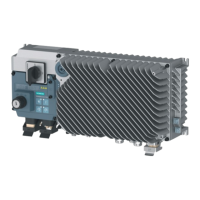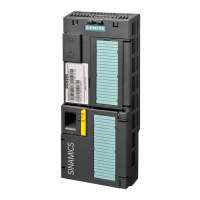Parameter description of Low Frequency Compensation Gain (ID # 3080)
The parameter can be adjusted for higher ux on the motor (to provide Flux Boost) at low
speeds. Default value is 1.0 p.u.
The motor ux is controlled as shown in the following equations.
Flux Boost = 1.0 - (1.0 / Low Freq. Comp. Gain
Motor Flux (or FluxDS) = Flux Boost * Flux Demand, if 0 < fo < 0.25 Hz
= Flux Demand + Flux Boost * Flux Demand * (4.5 -
fo)/4.25, if 0.25 < fo < 4.5 Hz.
= Flux Demand, if fo > 4.5 Hz.
Where, fo is the drive output frequency in Hz.
• Example 1
A setting of 1.10 would allow for approximately 9 % more ux at low speeds. This value ( 9 %)
of Boost is applied to the Flux Demand value (ID 3150) at low speeds from 0 to 0.25 Hz.
Above 0.25 Hz. the Boost is linearly reduced such that at 4.5 HZ., no Boost is applied and the
motor ux is controlled to be equal to the Flux Demand.
This parameter is useful in applications where high starting torque is desired. Careful
consideration is required in the selection of this parameter as motor magnetizing current could
increase rapidly with increasing ux (above rated). This could result in lower available torque
current, especially if motor PF decreases below 0.71.
• Example 2
To start a motor with higher starting torque, we can apply more ux to the motor when
starting. In a drive congured to apply 30 % of nominal ux, and is setup to appy 156 A (or
48 % of nominal current). Increasing the motor ux when starting will also help with torque
production, since:
Torque = FluxDS * Iqs
Parameter 3080 Low Freq Comp Gain can be used to apply more ux to the motor in the
0 to 4.5 Hz speed range.
By setting the parameter to 9.75 (instead of the default of 1.0) will allow 133 % of ux to be
applied (inverse of 0.75) at 0 speed, which is linearly reduced to 100 % at 4.5 Hz and higher.
Parameter description of S/W Compensator Pole (ID # 3090)
This parameter is used to adjust the compensation of the software lter pole to achieve best low-
end performance of the integrators.
For induction motors with low slip (e.g. 0.17 Hz) starting can be an issue. At such low output
frequency, the integrators used to convert motor voltage to ux are not as accurate.
• Example 3
To change ωp, adjust the parameter ID # 3090 S/W Compensator Pole from 2.0 rads / s to
1.4 rads / s.
This parameter (3090) represents the pole, ωp, in the integrator transfer function
= 1(s + ωp). The smaller this value, the more accurate the integration of motor voltages.
Further information for estimating ux using the pole of softwareintegrator
The control converts the motor voltage feedback into motor ux for estimating speed and
torque. This process requires an integrator to convert voltage into ux. An integrator has the
transfer function 1/s in the Laplace domain. If implemented, this translates to innite gain at zero
frequency or dc.
Parameter Assignment/Addressing
6.8 Options for Stability Menu (3) - rst half
NXGPro+ Control Manual
Operating Manual, A5E50491925A 129
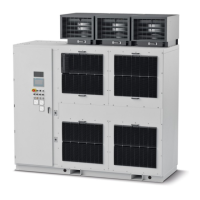
